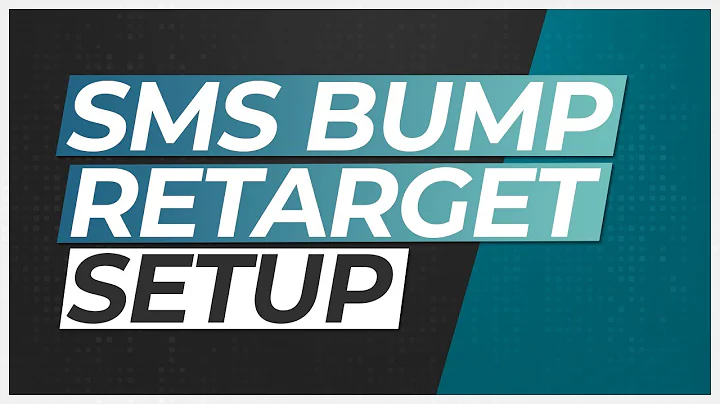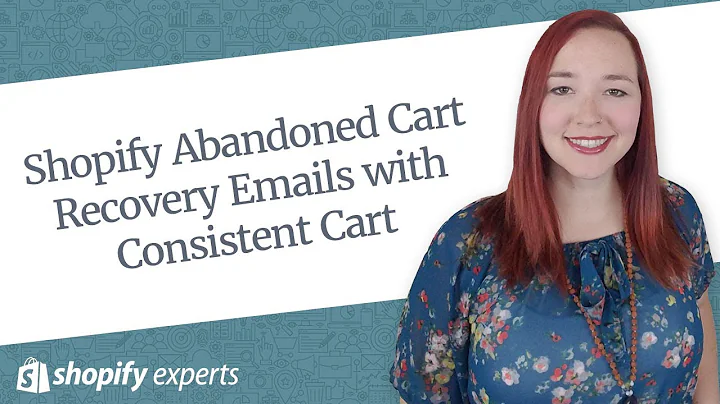Boost Shopify Sales with SMS Marketing
Table of Contents:
- Introduction
- Email Advertising
2.1 Benefits of Email Advertising
2.2 Best Practices for Email Advertising
2.3 Case Studies on Successful Email Advertising Campaigns
- SMS Advertising
3.1 Advantages of SMS Advertising
3.2 Best Practices for SMS Advertising
3.3 Case Studies on Successful SMS Advertising Campaigns
- ROI Comparison: Email vs SMS Advertising
4.1 Measuring ROI for Email Advertising
4.2 Measuring ROI for SMS Advertising
4.3 Pros and Cons of Email and SMS Advertising
- Utilizing Both Email and SMS Advertising
5.1 Building and Growing Email and SMS Lists
5.2 Integration Strategies for Email and SMS Advertising
- Organic Growth of Email and SMS Lists
6.1 Viral Marketing on Social Media
6.2 Converting Customers to Email and SMS Subscribers
- Conclusion
Email vs SMS Advertising: Which is More Effective for ROI?
Introduction
In today's digital world, email and SMS are two popular channels used by marketers for advertising. Both have their own advantages and can help businesses reach their target audience effectively. However, when it comes to return on investment (ROI), which channel provides better results? In this article, we will compare email and SMS advertising in terms of ROI and explore the benefits, best practices, and case studies associated with each channel. By the end, you will have a better understanding of which channel might be more suitable for your business and why utilizing both channels can be a winning strategy.
Email Advertising
Email advertising has been around for decades and remains one of the most popular and cost-effective marketing channels. With its low cost per thousand (CPM) and high potential for customization, email advertising offers numerous benefits for businesses.
Benefits of Email Advertising
Email advertising allows you to reach a larger audience at a relatively low cost compared to other marketing channels. With the ability to segment your email list and personalize content, you can tailor your messages to specific customer segments, increasing the chances of engagement and conversions. Additionally, email marketing platforms provide detailed analytics that allow you to track open rates, click-through rates, and conversions, providing valuable insights to optimize your campaigns.
Best Practices for Email Advertising
To maximize the effectiveness of your email advertising campaigns, it is important to follow some best practices. Firstly, ensure your email design is clean, visually appealing, and mobile-friendly. Use attention-grabbing subject lines and personalize your emails with the recipient's name. Keep the content concise, relevant, and engaging, and include a clear call-to-action (CTA) that prompts recipients to take the desired action. Regularly test and optimize your campaigns based on the data and insights from your email analytics.
Case Studies on Successful Email Advertising Campaigns
To illustrate the effectiveness of email advertising, let's take a look at a couple of successful case studies. Company A, an e-commerce retailer, implemented a targeted email campaign promoting their new product. By leveraging their segmented email list and personalizing the content, they achieved a high open rate of 27% and generated $244 in sales, resulting in an impressive ROI of 3341%. Similarly, Company B, a software provider, utilized an email campaign to offer a limited-time discount. The campaign resulted in a 19% click-through rate and $1560 in sales, showcasing the power of email advertising when executed strategically.
SMS Advertising
SMS advertising, also known as text message marketing, is another effective channel for reaching customers directly on their mobile devices. With its high open rate and immediate reach, SMS advertising can deliver quick and impactful messaging.
Advantages of SMS Advertising
One of the key advantages of SMS advertising is its unparalleled open rate. Almost everyone opens their text messages, making it an excellent channel for delivering time-sensitive promotions and urgent messages. SMS messages are typically concise and to the point, allowing businesses to communicate their message effectively in a limited space. Additionally, SMS advertising offers high levels of engagement, as recipients can easily respond to messages or click on embedded links.
Best Practices for SMS Advertising
To make the most of SMS advertising, it is crucial to follow some best practices. Keep your messages short, clear, and actionable. Use attention-grabbing keywords and offer exclusive discounts or promotions to incentivize recipients to take action. Obtain proper consent from customers before sending SMS messages to ensure compliance with privacy regulations. Regularly review and analyze the engagement metrics of your SMS campaigns to optimize future communications.
Case Studies on Successful SMS Advertising Campaigns
Several successful case studies demonstrate the effectiveness of SMS advertising. Company C, a restaurant chain, implemented an SMS campaign offering a limited-time discount. This resulted in a click-through rate of 2.69% and generated $440 in sales. Company D, an apparel retailer, utilized SMS advertising to inform customers about a flash sale. The campaign achieved an impressive ROI of 265% and generated $720 in sales. These case studies highlight how SMS advertising can drive immediate action and deliver positive ROI for businesses.
ROI Comparison: Email vs SMS Advertising
Measuring ROI for Email Advertising
To measure the ROI of email advertising, businesses need to track key metrics such as open rates, click-through rates, conversions, and sales generated from email campaigns. By analyzing these metrics and calculating the revenue generated against the cost of sending emails, businesses can determine the ROI of their email advertising efforts.
Measuring ROI for SMS Advertising
Calculating the ROI for SMS advertising follows a similar approach. However, unlike email, SMS does not have a measurable open rate. Instead, the focus is on click-through rates, conversions, and sales generated. By evaluating the revenue generated in relation to the cost of sending SMS messages, businesses can determine the ROI of their SMS advertising campaigns.
Pros and Cons of Email and SMS Advertising
Email Advertising:
Pros:
- Cost-effective and allows reaching a large audience.
- Offers high potential for customization and personalization.
- Provides detailed analytics for campaign optimization.
Cons:
- Lower open rates compared to SMS.
- Emails may end up in spam folders.
- Relies on recipients actively checking their email.
SMS Advertising:
Pros:
- High open rates and immediate reach.
- Short and concise messages deliver prompt messaging.
- Easy for recipients to respond or take immediate action.
Cons:
- Limited space for delivering detailed content.
- Requires prior consent from recipients.
- Higher cost per message compared to email.
Utilizing Both Email and SMS Advertising
Based on the comparison, it is clear that both email and SMS advertising have their own strengths. Rather than choosing one over the other, businesses can benefit from utilizing both channels for their marketing efforts.
Building and Growing Email and SMS Lists
To effectively utilize both channels, it is essential to build and grow your email and SMS lists. Implement strategies such as pop-up forms, lead magnets, and social media advertising to encourage visitors and customers to subscribe to your email list. Similarly, promote SMS subscriptions through opt-in campaigns, website banners, and offline promotions. By growing both lists simultaneously, you can maximize your reach and engagement.
Integration Strategies for Email and SMS Advertising
Integrating email and SMS advertising can enhance your marketing efforts. For example, you can use email campaigns to promote exclusive SMS offers and vice versa. By cross-promoting both channels, you increase the chances of conversions and engage with a wider audience. Moreover, synchronize your messaging across both channels to create a cohesive brand experience for your customers.
Organic Growth of Email and SMS Lists
Organic growth of email and SMS lists involves attracting new subscribers without paid advertising. Implementing strategies such as viral marketing on social media can help you reach a wider audience and convert them into email and SMS subscribers. By creating shareable content, offering incentives, and leveraging user-generated content, you can tap into the power of organic growth.
Conclusion
In conclusion, when it comes to ROI, email advertising and SMS advertising both have their merits. While email advertising offers a lower cost per thousand and comprehensive analytics, SMS advertising boasts higher open rates and immediate reach. To make the most of your marketing efforts, it is recommended to utilize both channels and build and grow your email and SMS lists simultaneously. By integrating and synchronizing your messaging, you can create a powerful advertising strategy that caters to the preferences and behaviors of your target audience.






















